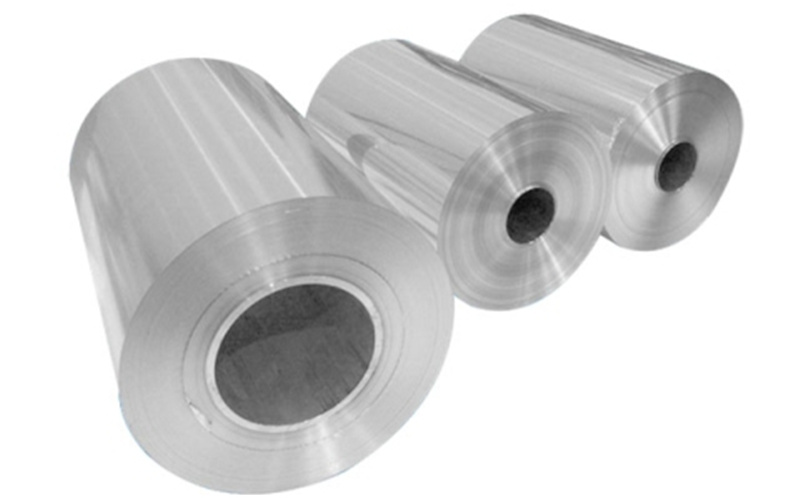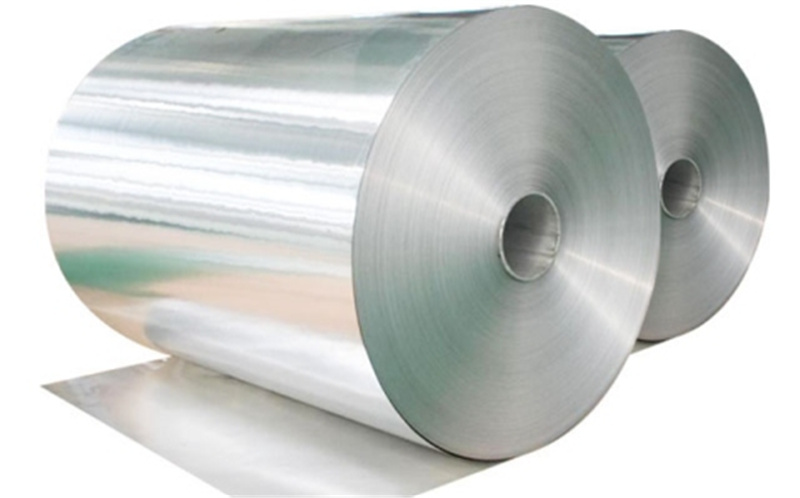As one of the commonly used materials in flexible packaging, aluminum foil has its unique characteristics and advantages. The following introduces the processing of aluminum foil and the classification of aluminum foil tapes on home appliances.
One, aluminum foil processing
During finishing rolling, the thickness of the foil decreases as the rolling speed increases; the greater the tension, the smaller the thickness. The thickness of the belt production method can reach 0.0025mm and the width can reach 1800mm. This kind of aluminum foil that has not undergone other processing is called light foil or plain foil. The light foil has a poor carrying capacity and is rarely used alone. Generally, according to different uses, the light foil must be further processed to make a higher packaging material.
The aluminum foil blank is a cold-rolled aluminum coil with a thickness of 0.4-0.7mm and a high multiple deformation rate. The aluminum foil blank is first quenched at 240-480°C, and then sent to the roller press with high hardness and high finish. After rough rolling, intermediate rolling and finishing rolling, the steel rolls are rolled into sheets, and then quenched to form aluminum foil. The thickness of the aluminum foil can be controlled by adjusting the tension, the rolling force of the rough rolling, and the speed of the finishing rolling.

2. Deep processing of aluminum foil
1) Laminating: Laminating aluminum foil with plastic film, paper, cellophane, etc. with adhesives or coating and laminating with PE, etc. to form composite films for various purposes.
2) Coloring: Aluminum foil can be painted in various colors on the coloring machine, and its metallic luster is expected to cooperate to form a special luster color and improve its decorative performance.
3) Printing: Aluminum foil can be printed directly, or printed on the surface after coating, generally using flexographic printing, gravure printing and screen printing. Because aluminum foil is not absorbent and its surface adsorption capacity is also poor, printing needs to rely on the volatilization of the solvent in the coating to dry it. In addition, the aluminum foil is very soft, so it is necessary to ensure that the softness of the printing ink is consistent with that of the aluminum foil after the printing ink is dried, and the ink film cracks, small pieces fall off, and even the whole separation phenomenon occurs in Party B. When printing, the thin aluminum foil should be supported by a pallet or mounted with a liner before printing to prevent the aluminum foil from breaking. The printed aluminum foil is used as a sales packaging material, and its special luster is matched with the ink, which has a good product decoration effect.
4) Embossing: Aluminum foil can be used to emboss various light and dark concave and convex patterns on the embossing machine, which is used to wrap food and has a decorative effect. Aluminum foil embossing can also improve its surface flatness and eliminate its slight wrinkles.

Three, the classification of aluminum foil tape
1) Conventional aluminum foil tape with backing paper/without backing paper: This kind of product is commonly seen in the market, with good adhesion, good heat preservation, and electromagnetic shielding function. It is mainly suitable for shielding of various electronic products, and thermal insulation in household and commercial electrical appliances, such as refrigerators and air conditioners.
2) Single and double-sided reinforced aluminum foil tape: It is a composite material with glass fiber yarn reinforced ribs sandwiched between aluminum foil and kraft paper. Apart from the functions of ordinary aluminum foil tape, it also has the functions of waterproof, mildew, and heat insulation. It can be used for pipe insulation, external protection of cooling and heating equipment, and heat insulation of buildings and hotels.
3) Glass fiber cloth aluminum foil tape: like it is a composite of aluminum foil and glass fiber cloth through an adhesive. It has good air tightness, oxidation resistance, weak acid and alkali resistance, explosion-proof and flame-retardant properties. The key use is the construction of pipe sealing and electric mat heating system.
4) Flame-retardant aluminum foil tape: This type of product is a composite flame-retardant tape with pure aluminum foil as the base material, and its glue is also flame-retardant, and then covered with a white silicone release paper with good performance as a lining Paper. High peel strength, good adhesion, and flame retardant properties are also good. It is suitable for wind pipe insulation, wall insulation, and steel structure insulation, as well as automobile and train compartment insulation, and ship pipeline insulation.
The above is the processing of aluminum foil and the classification of aluminum foil tape. As a manufacturer specializing in the production of aluminum materials, we have a certain understanding of aluminum materials. Our company now sells aluminum foil, aluminum coil, etc. If you are interested, you can call us at any time.

